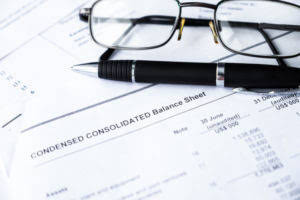
It is important to note that salvage value is an estimation and may not always reflect the actual value realized upon asset disposal. Regularly monitoring and reassessing its estimates can help ensure their accuracy and relevance. The type of asset, its depreciation pattern, and external factors such as changes in regulations or industry trends can also impact the estimation. It is the anticipated value of the asset, considering elements such as depreciation, age-related deterioration, and becoming outdated. Salvage value is the projected worth of an asset when it has completed its useful cycle or is no longer being utilized.

Depreciation Expense
Declining balance depreciation allows companies to take larger deductions during the earlier years of an assets lifespan. Sum-of-the-years’ digits depreciation does the same thing but less aggressively. Finally, units of production depreciation takes an entirely different approach by using units produced by an asset to determine the asset’s value. If a company wants to front load depreciation expenses, it can use an accelerated depreciation method that deducts more depreciation expenses upfront.
Prepare a depreciation journal entry
Have your business accountant or bookkeeper select a depreciation method that makes the most sense for your allowable yearly deductions and most accurate salvage values. One of the first things you should do after purchasing a depreciable asset is to create a depreciation schedule. Through that process, you’re forced to determine the asset’s useful life, salvage value, and depreciation method. Map out salvage value formula the asset’s monthly or annual depreciation by creating a depreciation schedule. When businesses buy fixed assets — machinery, cars, or other equipment that lasts more than one year — you need to consider its salvage value, also called its residual value. It includes equal depreciation expenses each year throughout the entire useful life until the entire asset is depreciated to its salvage value.
Double Declining Balance (DDB) Method
It uses the straight-line percentage on the remaining value of the asset, which results in a larger depreciation expense in the earlier years. This method requires an estimate for the total units an asset will produce over its useful life. Depreciation expense is then calculated per year based on the number of units produced. This method also calculates depreciation expenses based on the depreciable amount. The sum-of-the-years’-digits method (SYD) accelerates depreciation as well but less aggressively than the declining balance method. Annual depreciation is derived using the total of the number of years of the asset’s useful life.
- The useful life assumption estimates the number of years an asset is expected to remain productive and generate revenue.
- Discover how to identify your depreciable assets, calculate their salvage value, choose the most appropriate salvage value accounting method, and handle salvage value changes.
- Straight-Line Depreciation is the uniform reduction in the carrying value of a non-current fixed asset in equal installments across its useful life.
- The real cash outflow occurred earlier on the original date of the capital expenditure (Capex).
- It just needs to prospectively change the estimated amount to book to depreciate each month.
- In some contexts, residual value refers to the estimated value of the asset at the end of the lease or loan term, which is used to determine the final payment or buyout price.
Depreciation Rate:
It spreads the decrease evenly over the asset’s useful life until it reaches its salvage value. So, when a company figures out how much something will lose value over time (depreciation), they also think about what it might still be worth at the end, and that’s the salvage value of that asset. At this point, the company has all the information it needs to calculate each year’s depreciation.
- In such cases, the insurance company decides if they should write off a damaged car considering it a complete loss, or furnishing an amount required for repairing the damaged parts.
- Deskera ERP provides comprehensive asset management features that streamline the tracking, depreciation, and eventual disposal of assets.
- The salvage value is considered the resale price of an asset at the end of its useful life.
- Finally, units of production depreciation takes an entirely different approach by using units produced by an asset to determine the asset’s value.
How to calculate and record depreciation with salvage value
The depreciation journal entry accounts are the same every time — a debit to depreciation expense and a credit to accumulated depreciation. For example, the double-declining balance method suits new cars well since they tend to lose a significant amount of value in the first couple of years. Unlike the other methods, the double-declining balance method doesn’t use salvage value in its calculation.

Depreciation is a non-cash expense that allocates the purchase of fixed assets, or capital expenditures (Capex), over its estimated useful life. For example, due to rapid technological advancements, a straight line depreciation method may not be suitable for an asset such as a computer. A computer would face larger depreciation expenses in its early useful life and smaller depreciation expenses in the later periods of its useful life, due to the quick obsolescence of older technology. It would be inaccurate to assume a computer would incur the same depreciation expense over its entire useful life. Accountants use the straight line depreciation method because it is the easiest to compute and can be applied to all long-term assets. However, the straight line method does not accurately reflect the difference in usage of an asset and may not be the most appropriate value calculation method for some depreciable assets.
